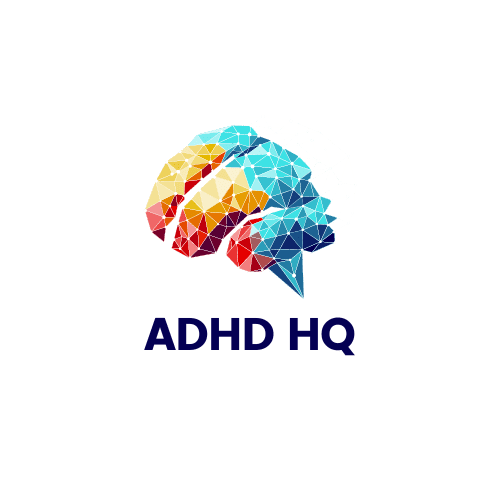Can Lead Poisoning Cause Autism
As the saying goes, 'connecting the dots,' when it comes to the potential link between lead poisoning and autism, the puzzle pieces seem to be aligning.
The intricate relationship between these two seemingly unrelated conditions raises thought-provoking questions about the impact of environmental factors on neurodevelopment.
Exploring this connection could lead to significant insights into the complex nature of autism spectrum disorder and pave the way for innovative approaches in understanding its etiology.
Key Takeaways
- Lead exposure is associated with developmental disabilities, including autism.
- Elevated lead levels can lead to cognitive impairments and behavioral challenges.
- Understanding the link between lead poisoning and autism is essential in neurodevelopmental research.
- Preventing lead exposure is crucial to safeguard cognitive and behavioral outcomes in children.
Lead Poisoning and Autism: Understanding the Link

Understanding the potential link between lead poisoning and the development of autism is crucial in unraveling the complexities of both conditions. Exposure to lead, a toxic metal, has been associated with developmental disabilities, including autism. Research has shown that children with autism tend to have higher levels of toxic metals in their bodies, with elevated lead levels being a common finding. This overlap in symptoms between lead poisoning and autism can make diagnosis and management challenging, as lead exposure may manifest similarly to autism traits.
During critical developmental periods, variations in metal uptake have been observed between autistic and non-autistic children, further highlighting the significance of understanding the impact of lead exposure on cognitive and behavioral functions. By delving into how lead exposure affects individuals, particularly children, we can gain insight into its potential role in the development of autism. This underscores the importance of considering environmental factors, such as lead exposure, in the broader conversation around autism spectrum disorders.
Neurodevelopmental Impact of Lead Exposure

Lead exposure can have profound effects on brain development, potentially leading to cognitive impairments and behavioral challenges. Research indicates that elevated lead levels are associated with alterations in cognitive abilities that mirror those seen in autism spectrum disorder.
Understanding how lead impacts neurological systems is essential in unraveling its potential contribution to the complexities of autism.
Lead and Brain Development
Exposure to lead during critical periods of brain development can have detrimental effects on cognitive processes and behavior, potentially contributing to neurodevelopmental disorders like autism. Research indicates that exposure to lead, a known neurotoxin, can disrupt normal brain development, leading to developmental disabilities and cognitive impairments.
Studies have suggested a connection between lead poisoning and the onset of autism spectrum disorder, highlighting the importance of monitoring and preventing lead exposure, especially in early childhood when the brain is most vital. Excessive lead exposure during pivotal developmental stages may result in structural and functional changes in the brain, impacting long-term cognitive function and behavior.
Understanding the neurodevelopmental impact of lead is essential in unraveling its potential role in the development of autism and other neurodevelopmental disorders.
Cognitive Effects of Lead
Having been linked to cognitive deficits, learning disabilities, and attention deficits, lead exposure poses significant risks to individuals' neurodevelopmental outcomes. Elevated blood lead levels have shown a critical association with cognitive and intelligence scores, leading to declines in IQ and memory performance. Studies indicate that lead exposure is correlated with deficits in reading, language capabilities, and memory.
These cognitive effects of lead can impact individuals across various age groups, potentially causing developmental problems that persist into adulthood. Understanding the detrimental effects of lead on cognitive function is vital in recognizing the importance of preventing lead exposure to safeguard neurodevelopmental outcomes. The evidence underscores the necessity of addressing lead exposure to mitigate the risk of cognitive deficits and other developmental challenges.
Behavioral Impacts of Lead
Understanding the impact of lead on cognitive function sheds light on the behavioral ramifications of lead poisoning, especially regarding social skills and interaction abilities in children. Research indicates that lead exposure is associated with deficits in social skills and social interaction abilities, leading to challenges in developing appropriate social behaviors. Children exposed to lead may exhibit reduced social engagement, social withdrawal, and difficulties in forming relationships.
Additionally, lead poisoning has been linked to the development of behavioral issues, anxiety, shyness, and social problems in infants and children. These alterations in neurological mechanisms due to lead exposure may contribute to social withdrawal and disinterest in normal social activities, highlighting the importance of recognizing and addressing the behavioral impacts of lead poisoning on children's social skills and interactions.
Research Findings on Lead and Autism

In the investigation of lead and autism, compelling research findings have indicated a potential association between higher lead levels in the bodies of children with autism and the development of autism spectrum disorder. Studies have consistently shown that children diagnosed with autism spectrum disorder tend to have notably elevated levels of lead in their bodies compared to their non-autistic counterparts. This correlation raises concerns about the impact of lead poisoning on the neurodevelopment of children, particularly during critical periods of growth and maturation.
The presence of increased lead levels in the baby teeth of autistic children further supports the notion of a connection between lead exposure and autism. Additionally, research suggests that differences in metal uptake, including lead, during critical developmental stages may play a role in the manifestation of autism. Understanding these research findings is essential in exploring the potential link between lead exposure and the development of autism spectrum disorder in children.
Mechanisms Behind Lead-Induced Autism

Children with autism spectrum disorder exhibit higher levels of toxic lead compared to their non-autistic peers, pointing towards crucial mechanisms linking lead exposure to the development of autism. The intricate interplay between lead poisoning and autism involves various pathways that impact neurological development. Understanding these mechanisms is crucial for unraveling the complex relationship between lead exposure and autism.
- Disruption of Neurological Pathways: Lead poisoning can interfere with essential neurological pathways involved in cognitive function and behavior, potentially contributing to the manifestation of autism.
- Oxidative Stress: Lead-induced oxidative stress may disrupt neuronal signaling and contribute to the neurodevelopmental abnormalities observed in individuals with autism.
- Epigenetic Modifications: Exposure to lead can trigger epigenetic changes that alter gene expression patterns, potentially influencing the development of autism spectrum disorder.
These mechanisms highlight the intricate ways in which lead poisoning can affect neurological pathways and potentially lead to the development of autism. By delving deeper into these processes, we can gain valuable insights into the underlying mechanisms of lead-induced autism.
Public Health Implications of Lead Poisoning

The impact of lead poisoning on public health extends far beyond individual cases, affecting communities and necessitating thorough strategies for prevention and intervention.
Lead poisoning, known for its detrimental effects on cognitive function and behavior in children, can manifest as symptoms resembling Autism Spectrum Disorder (ASD). Cognitive deficits, learning disabilities, and attention issues resulting from lead exposure can mimic ASD traits, complicating diagnosis.
Additionally, behavioral delays and challenges in social interactions, often seen in children with lead poisoning, further blur the lines between the conditions. Distinguishing between lead-induced cognitive impairments and true ASD requires expert evaluation due to the overlap in symptoms.
Addressing the public health implications of lead poisoning involves not only individual treatment but also community-wide efforts to reduce exposure and provide support for affected individuals. By recognizing the impact of lead poisoning on cognitive development and social interactions, we can better tailor interventions to mitigate its effects on public health.
Prevention Strategies for Lead-Related Autism
In considering prevention strategies for lead-related autism, early detection methods play a vital role in identifying and addressing potential risks promptly.
Implementing environmental safety measures, such as lead abatement programs and regular testing of water sources and homes, can greatly reduce exposure levels and mitigate the risk of autism.
Educating parents and caregivers on the dangers of lead exposure and advocating for policies that regulate lead content in consumer products are essential steps in safeguarding children from the detrimental effects of lead exposure on neurodevelopment.
Early Detection Methods
Implementing proactive lead screening measures can greatly reduce the risk of autism spectrum disorder associated with lead poisoning. Early detection plays an essential role in identifying and addressing lead exposure in children, potentially preventing the development of autism. Screening for lead levels can help healthcare providers intervene timely and provide necessary treatments to reduce the risk of autism spectrum disorder. To prevent lead-related autism effectively, strategies should focus on minimizing exposure to sources of lead in the environment. By implementing environmental modifications and ensuring prompt intervention for lead poisoning, the likelihood of autism development can be substantially decreased.
- Early detection through screening aids in timely intervention.
- Minimizing exposure to lead sources is key in prevention.
- Prompt treatment for lead poisoning can mitigate autism risk.
Environmental Safety Measures
To effectively safeguard against the potential risks of lead-related autism, prioritizing environmental safety measures is paramount in minimizing exposure to harmful lead sources. Implementing strict regulations on lead exposure can greatly reduce the likelihood of neurodevelopmental disorders such as autism.
Early identification and removal of lead sources in the environment are important steps in decreasing the risk of lead-related autism. Educating parents and caregivers about the dangers of lead exposure plays a key role in protecting children from developmental issues.
Regular monitoring of lead levels in children is essential for detecting and addressing any lead poisoning risks that may contribute to autism. Encouraging regular screening for lead exposure in high-risk populations can help mitigate the potential link between lead poisoning and autism development.
Legal Considerations for Lead Poisoning Cases

Exploring the legal landscape surrounding lead poisoning cases involves a meticulous examination of the potential impact of lead exposure on autism misdiagnoses. When considering legal aspects related to lead poisoning and its potential connection to Autism Spectrum Disorder (ASD), several key factors come into play:
- Distinguishing Symptoms: Understanding the distinct symptoms of lead poisoning and ASD is important in legal evaluations to prevent misdiagnoses.
- Expert Consultation: Seeking guidance from experts in neurodevelopmental disorders can aid in determining the influence of lead poisoning on cognitive and behavioral functions for legal purposes.
- Compensation and Support: Individuals affected by misdiagnosed ASD due to high lead levels may seek compensation for damages. Specialized legal firms can provide essential support and guidance for those pursuing legal actions in cases involving lead poisoning.
Exploring the legal considerations in lead poisoning cases requires a thorough understanding of the complexities involved, ensuring that individuals receive appropriate legal assistance and support in seeking justice for the potential repercussions of lead exposure on autism misdiagnoses.
Frequently Asked Questions
What Does Lead Poisoning Do to a Child?
Lead poisoning can cause a range of issues in children, from behavior problems and cognitive impairment to developmental delays and attention issues. It can also lead to hyperactivity, social difficulties, language deficits, and memory problems. Early intervention is critical.
What Is the Leading Cause of Autism?
Autism is a complex condition influenced by genetic factors and environmental triggers. Brain development is intricately tied to the autism spectrum. While prenatal exposure and neurotoxic effects have a role, the exact cause remains multifactorial.
Can Lead Poisoning Cause Learning Disabilities?
Excessive lead exposure can cause cognitive impairments and behavioral challenges, impacting neurological development. Educational interventions are vital for those affected. Preventing exposure to environmental toxins is key. Addressing lead poisoning's effects on learning and behavior is imperative.
What Are the Long Term Effects of Lead Exposure?
Long-term effects of lead exposure encompass cognitive development issues, behavioral challenges, neurological damage, and health complications. These consequences can impact memory, attention, language skills, academic performance, social interactions, emotional regulation, and overall well-being.
Conclusion
To sum up, the evidence strongly suggests that lead poisoning can indeed play a role in the development of Autism Spectrum Disorder.
With neurological deficits and cognitive impairments linked to lead exposure, it's essential to address this potential risk factor in autism research and prevention efforts.
As the saying goes, 'knowledge is power,' and understanding the impact of lead on neurodevelopment can lead to better strategies for protecting individuals from its harmful effects.







